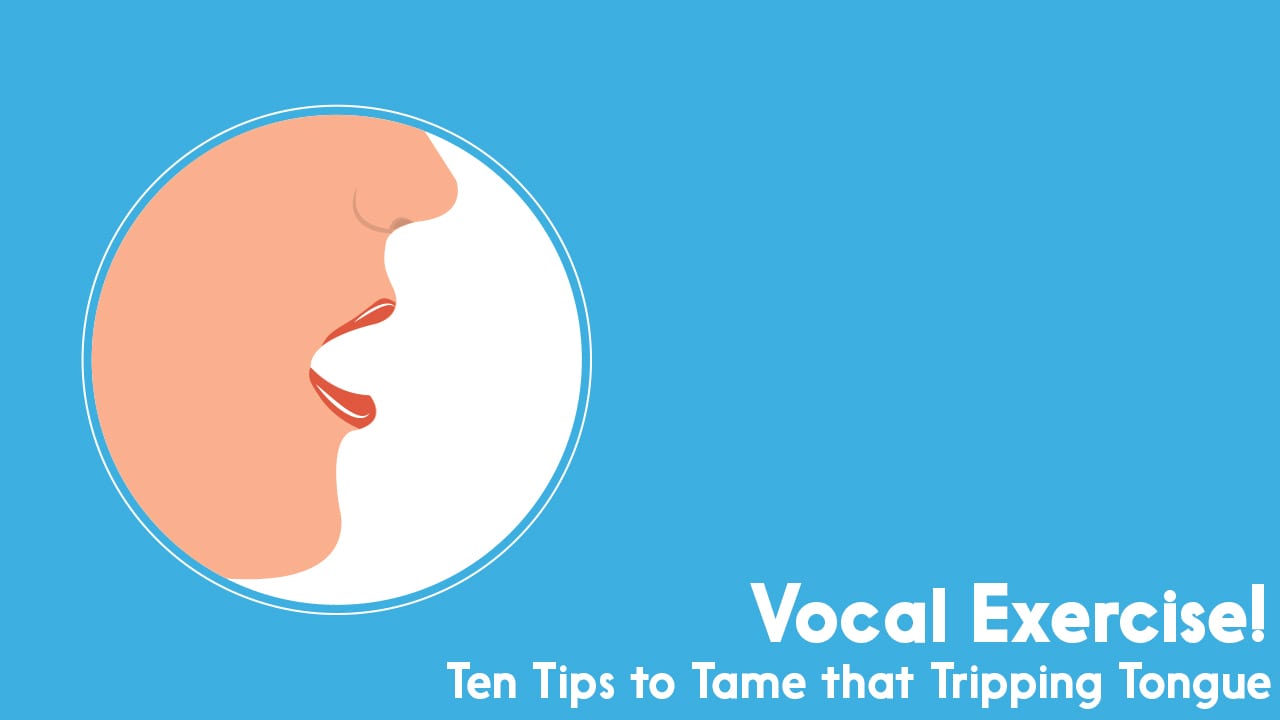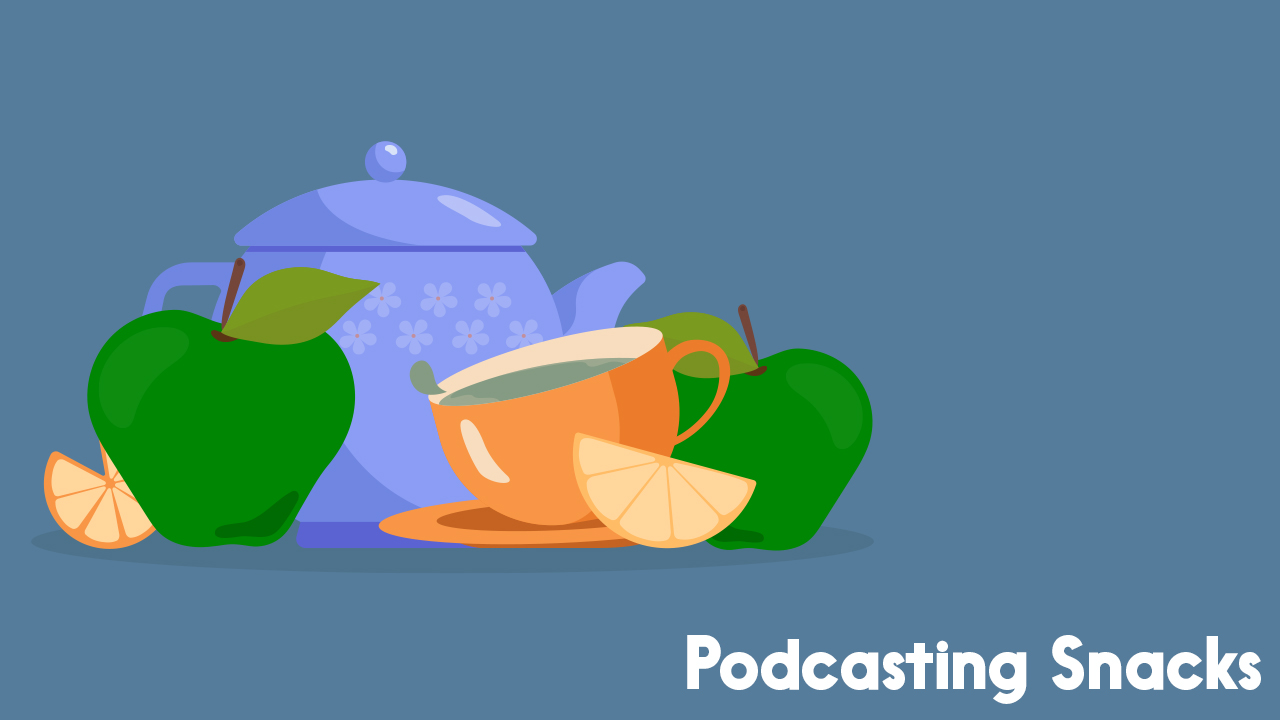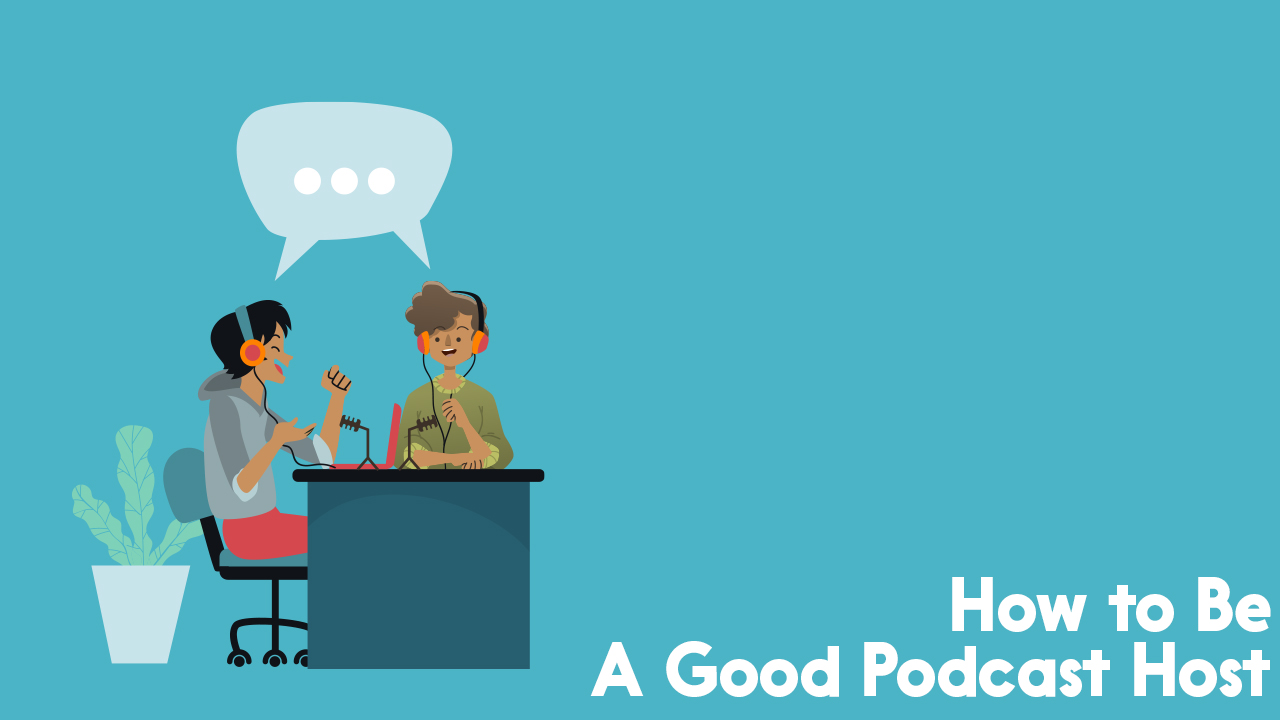Podcast Presentation Skills | Honing Your Speechcraft
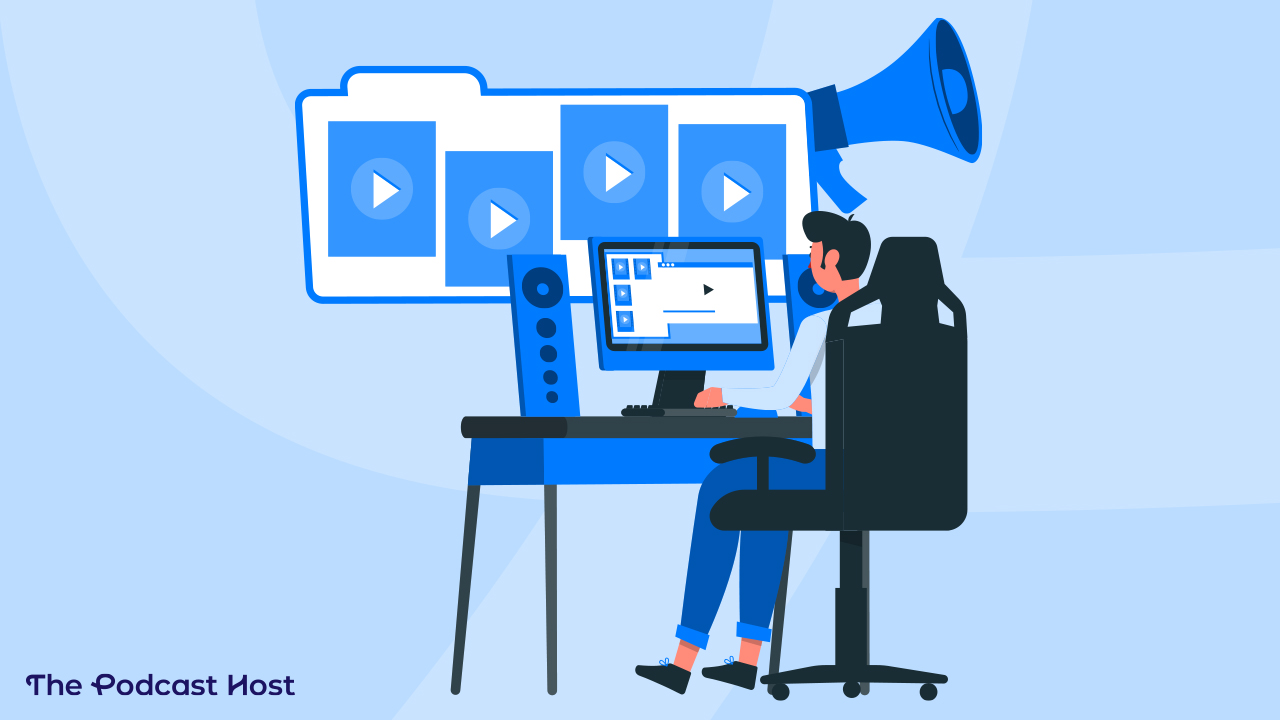
The aim of this guide is to help you polish up on your existing presentation skills, whether you’re new to podcasting or been in the game for a while and want to tighten up.
It could be that you’re still having jitters when you press Record? Or, maybe you feel like you’re not getting the most out of your interviews? We’ll address these sorts of things and more.
Over seven chapters we’ll cover the concerns often voiced by podcasters, old and new.
So let’s dive in!
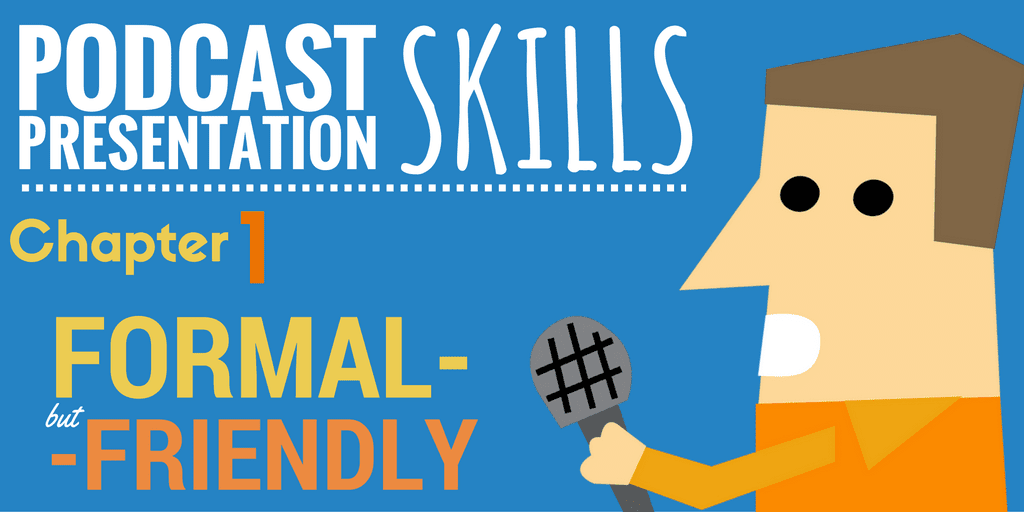
Formal but Friendly | Podcast Presentation Skills #1
You make your own podcast. You want to communicate your message effectively. Naturally, you want it to sound structured but not scripted. We’ve talked a little about invisible scripting in the past, for example.
What about your delivery? Have you even thought about your tone of voice or the wording you’re using? Okay, let’s cover a few tips to put you on the right path.
The Script
Most podcasting veterans and radio jocks alike will advise against having a script written out word for word. It’ll sound more like you’re reading than talking. Instead, consider having a list of headings and notes to read from. The shorter and more concise they are, the easier it’ll be for your presenting to flow naturally.
For example; if I write in my notes `Podcasting – formal but friendly. Address 1 person,` I might end up actually saying something like,
“So, you probably want to come across as professional, but not too stiff. After all, you want to sound like you’re having a genuine conversation. With that in mind, try to act like you’re speaking to one person at a time, as if they’re right in the room with you. Avoid talking to everyone at once. It’ll help you sound more natural.”
The more familiar you are with your notes, the easier it’ll be to convey them in your own words. A good thing to practice is to do a dry run, bouncing off your notes to see how it sounds before you hit Record. Check this article out for more script-writing tips.
The Presenter
Don’t hold back. Don’t be needlessly humble and don’t sound like you’re about to apologise for bothering people!
You’re bringing them great content, but you’ve got to sound like you believe it. That said, you want to be assertive, but not aggressive. Try smiling as you’re talking. The more fun you’re having, the more that’ll come across.
Again, the more you know your script, your topic, and your podcast structure, the easier your words will flow. You’ll sound effortless and confident.
Also, be mindful of your pace and pitch; make sure your pacing is suitably engaging. You don’t want to come off too sluggish and deliberate. That said, don’t rush your script or you’ll end up stumbling. Plus, your audience needs time to absorb what they’re hearing.
Regarding your pitch, be sure to keep it varied – avoid the dreaded monotone.
Remember to Breathe
Despite us all learning to breathe before we’re even born, many of us struggle to moderate our breathing when talking under pressure.
Try and remember to breath steadily and deeply. If you’re anxious, you can easily forget and your breathing will become erratic, affecting the quality of your voice.
If this happens during a recording, just stop and take a deep breath before carrying on. And don’t worry, this happens to professional singers, too.
Language
The language you use is important – conside your phrasing and whether it’s jargon heavy. Maybe it is but does it suit your target audience? A lesson I learned in broadcasting was to “treat your script as if you’re trying to convey something to a friend.”
It’s also a good idea to keep some water close by, just in case you dry up and start croaking.
Lastly, if you feel like you’re inexplicably struggling to pronounce your words, have a think about how you might phrase certain things differently. Maybe you’ve put too many awkward words next to each other?
“Rural jurors adjourn the débutante adjutant before bidding the conjurer adieu.”
Okay, that’s not something you’re likely to say on a podcast, but you get the picture. And if you find you’re having difficulty pronouncing words in general, here’s a tip on enunciation;
Try reading your script with a pen or your fingers in your mouth for 30 seconds – it’ll sound awful, obviously – and then try it again normally.
You should hopefully now sound a lot clearer than before. Think of it as waking your tongue up by forcing it to work hard.
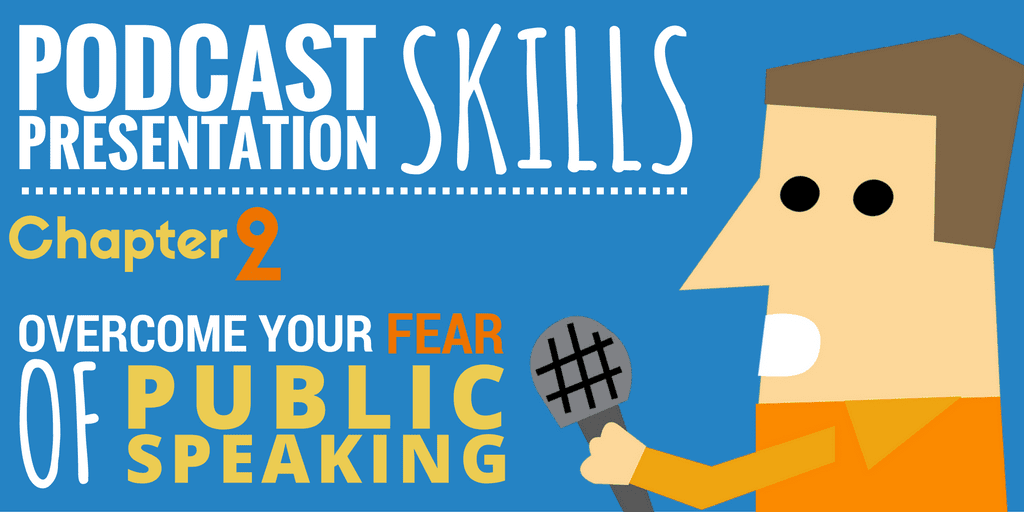
Overcome Your Fear of Public Speaking | Podcast Presentation Skills #2
One of the most common phobias or hang-ups in the entire world is public speaking. This can affect us as podcasters, regardless of the self-confessed absurdity of the situation. “I mean, there’s nobody else here except for me and my microphone! What am I so worried about? It’s so silly!”
You’re not alone and you know it, but that doesn’t help when the Record light flashes away, demanding you speak fluidly and coherently. Oh, the pressure!
So what are we afraid of?
Anxiety
Public speaking is undoubtedly one of the most common phobias, and has been known to cause panic attacks. It’s also an easy enough thing to avoid for most of your life, barring the odd High School oral presentation or giving a speech at a wedding.
It may surprise you that some people will happily sing Karaoke in a crowded bar, but the thought of giving a presentation to a small group of peers terrifies the life out of them. So why is this?
I suspect a lot of it is to do with practice – getting past that initial stage of meeting the unknown. Podcast presenting is a form of performance. It gets easier the more you do it. But how do we get there?
There are key worries when it comes to this form of performance anxiety;
- What if I sound stupid?
- Why does my voice sound so awful (to me)?
- What if I make a mess of it?
- What if people think I’m no good?
- What if I lose my place or forget something?
What if I Sound Stupid?
A natural fear, but trust me – it goes away. Once you’ve done a few episodes, you won’t even think about it. When you listen back to your recording, you should hopefully realise that you’re doing better than you’d feared.
Yes, your voice sounds different on tape to how you hear it in your head, but there’s a scientific explanation for that. It’s to do with acoustics and the vibrations in your head caused by your voice. Everybody’s voice sounds different to them when they hear a recording played back. Make peace with it and move on!
What if I Make a Mess of it?
It’s a podcast recording! If you do fluff a word or phrase, just stop and take a breath. Maybe even a curse word or two. When you’re ready, go again.
What if People Think I’m no Good?
Remember; it’s your podcast and you’re the expert! People listening to your show have already bought into that. As long as you get your message across coherently, your audience will be happy.
What if I lose my place or forget something?
Again, it’s a recording. Stop, take a breath, and read over your notes. Did you digress? Find your place and carry on. The magic is all in the editing. Surely you’ve seen or heard enough “Blooper Reels” to know you’re not alone in making the odd fluff!
Practice Makes Perfect
Cliché time – “The only thing we have to fear is fear itself.” A famous quote from Franklin D. Roosevelt when he became President in 1933, and with good reason.
If you’re feeling nervous in front of the microphone, try talking about something other than your podcast for ten minutes. Make some notes and chat away to yourself until you feel a bit more relaxed. You’ll find your voice before you know it.
It’s the same with all things; presentations, podcasting, even Karaoke – it gets easier each time.
I would also add that for extra confidence early on in your podcasting career, you could try a few practice runs without recording it. Simply talk aloud and go through your script notes until they’re second nature.
Then, when the red light is on for recording, you’ll find it flows much more harmoniously.
Other Things to try During Recording
It could be that you need something or someone to focus on while you’re talking aloud. It’s all good and well knowing you’ve to address one imaginary listener, but it can feel strange talking to an empty room.
Here’s more on creating your listener ‘avatar’.
Try putting a teddy bear in the space opposite you. Seriously, Ted wants to hear all about your topic, so let him or her know! Focus your wording and energy on talking to the teddy.
Don’t want to talk to a teddy? Okay, that’s understandable. What about a photo? Try sticking a photograph up on the wall and talking to it.
You could even talk to your own reflection in the mirror. Having an animated image to glance at could help galvanise your performance.
Heck, if none of that suits you, what about just imagining a trusted family member or friend is in the room? It’s your job to present your topic to them, without the pressure of them actually being there.
It really depends on your own personal tastes and sensibilities, but I know these things have all worked for different people.
Don’t Rush
That sudden, mad impulse to rush through it – we all know it. Fight the urge!
Talking too fast disruptes the natural flow of your breathing. You’ll end up with short, shallow breaths that in turn messes with your diction and rhythm.
Not only that but you’ll often end up holding your breath in a subconscious effort to control it. Suddenly, you’re short of breath and panic starts to kick in. Worst of all, it detracts from your performance. A sort of self-fulfilling prophecy.
Break the Cycle
You CAN beat the fear! Just keep practicing, and try some of the techniques we talked about.
Remember – you’re in control. You can record and delete to your heart’s content. Not only that but, when it comes to your topic, you’re the expert and we want to hear you!
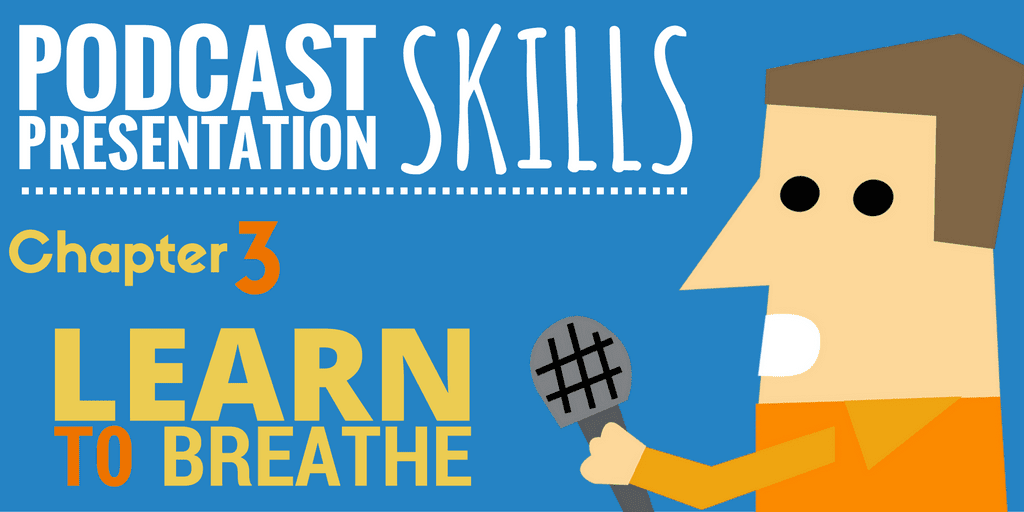
Learn to Breathe! | Podcast Presentation Skills #3
A lot can go into making a podcast.
Once you’ve done the prep, sourced the interviews, and found the perfect music – including a saucy little stinger or two during the episode – it’s easy to forget about arguably the most important thing when it comes to presentation.
Your voice.
Warming up your voice is essential, not just for singers but for any professional vocalist. Here are a few tips to get you into the groove.
Humming and Singing
Try humming and even a singing a few scales – don’t worry if you don’t think you’re any good, this is about getting you warmed up.
Try a few `lip trills’, also known as ‘horse lips’, by blowing on a P or B sound through soft lips. This helps to warm up and relax your mouth and lips.
You should find it easier to pronounce certain words and vowel sounds, and this takes some pressure off your vocal chords.
Relax Your Jaw
Your jaw controls the sound of your voice so you have to take care of it, too. Massage your cheeks with the palm of your hands until your jaw opens naturally. Try this a few times and it should actually feel easier to talk for an extended period.
Breathe Deep
Most of us only use the air at the top of our lungs, and we just refill them every few words or so. The problem here is you can be quickly out of breath after speaking a long sentence.
Plus, if you’re not using your diaphragm, you’re not using your voice’s full potential. Let the air out!
Try not to forget to breathe normally during recording, and keep your shoulders low and your chest relaxed.
If you feel out of breath, stop talking and let some air in and out before you resume. You can always edit the pause out later.
Posture
Of course, you’re going to be able to breathe better if your posture is good, and it’s the same whether you record sitting down or standing up.
Imagine a camera looking down at your head from above – is it aligned with your back and shoulders?
It’s important for your airflow not to be restricted to give your voice the best chance of flourishing.
If you record standing up, keep both feet flat on the ground, about shoulder-width apart. Keep your shoulders back and your chin up.
The rule of thumb is that every part of your body should be aligned the same way.
If you record sitting down, it’s pretty much the same guidelines, but also keep your back off the chair, sitting toward the edge of your seat.
Avoid Cold Water
It seems so natural, doesn’t it? A little sip of cold water to keep you fresh. Well, actually cold water can actually make your vocal cords clam up!
Truth be told, it’s a good idea to avoid caffeine and nicotine for the same reasons. Your best bet is warm tea – not hot – or water served at room temperature.
Dairy’s off the menu, too. It can coat your throat and make it more difficult to push out air through your vocal cords.
Some podcasters and voice-over talent even swear by eating a green apple before getting in front of the mic. If you’re bothered by overly-loud clicks and lip smacks during your recording sessions, be sure to try it yourself!
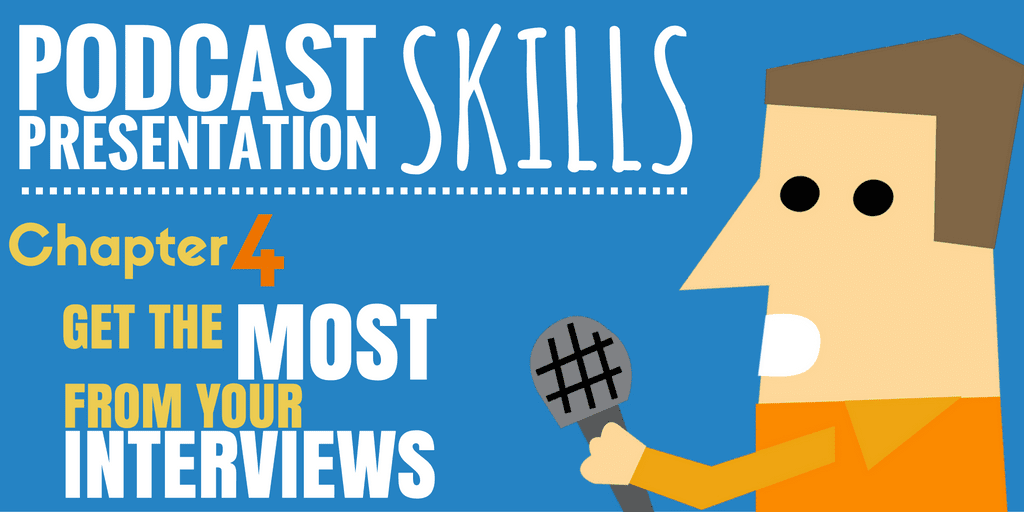
Get the Most From Your Interviews | Podcast Presentation Skills #4
Interviews are a great way of adding variety and gravitas to your podcast.
It shows you have an understanding of your topic because you’re approaching the right people. Plus, there’s clearly a respectable level of work that goes into your production.
All the more reason to build on your hard work by doing it right.
Preparation
A few things you should always do before pressing Record.
Who are They?
Find out as much as you can about the person you’re interviewing – everything that’s relevant to your podcast, at least.
Have they done interviews before? If so, what style do they like to take? For instance, are they quite formal and guarded or do they like to relax and laugh?
Not only that, but what have they said before on the subject? If you can get an idea of how they think, you’ve got more chance of asking the right questions and getting decent audio for your show.
Stock up on Topic Info
What if your guest has brief answers and you’re suddenly bounding through your main questions quicker than you’d planned?
You don’t want to end up red-faced, making small talk about the weather, so you need somewhere to go. Think of some back-up material you can discuss, like predictions for the future or how they feel about relevant issues. Anything to keep them talking!
For more on this, check out our guide to asking great podcast interview questions.
Don’t Overrun
I know I’ve just warned you to have back-up material, but in my experience most interviewees will talk until the cows come home.
If you’re planning a specific episode length – including, say, 15 minutes of edited interview audio – then you need to make sure they know that. They’ll realise there’s no point on talking for an hour on the subject if you’re not going to use most of it.
Back when I was a radio journalist, I made the mistake several times early on of allowing the interviewee ramble on for ages, even when I knew I’d be cutting 9 minutes of raw audio down to 3x fifteen second clips for a news bulletin!
What did I do wrong? I guess I just didn’t want to be rude, coming across like this; “Keep it brief, First Minister, I only need a minute’s worth.”
I should have made clear what the requirements were and controlled the conversation.
Ask the Right Questions
Your questions should be straight forward and open-ended. Instead of asking something with a Yes or No answer, ask them something that they have to expand upon;
- Tell me about your experiences with this topic?
- How do you feel about X?
- What’s the best Y you ever had or did?
- What’s next for you?
Open questions are the best way to get their creative flow going, and it makes it harder for them to give evasive answers.
Listen, Understand and React
One of the worst things you can do – and it’s easily done – is to tune out from what your guest is saying. Usually because you’re too focused on having your next question ready.
Say they give an answer to your question about vacation plans that include something like “I’m hoping to go back to Ireland for vacation this year because I was actually born there.”
If you’re not listening properly but you hear “Ireland”, your next question might be, “Have you ever been to Ireland before?”
Faux Pas alert! They just told you they were born there! And now you’ve just gone down in their estimation as a decent interviewer.
As I say, it’s easy to do. Especially if you’re nervous or haven’t done enough planning and you’re winging it. The answer is to do your prep!
So be aware of what they’re saying and respond directly to their answers. You don’t have to ask every question on your list. React accordingly to what they say.
Control the Conversation
Warm Them up
You’ll often find that interviews go much more smoothly in the second half. By then, you’ve both had time to relax, get into the groove, and find your respective voices.
If you have the time, a good way of getting a head start is to chat about something off-topic for a minute or so. Something you know they like. Sports, weather, the weekend, anything you can easily dip into and share a laugh over.
By the time you’re actually rolling with the set questions, you’ll hopefully hit the ground running.
On that note, don’t feel like you can’t hit record until you ask something on-topic. I always start recording from the moment I start speaking to my interviewee. This might be more relevant to journalism, but you never know what might be said in the moment which you’ll want to use in your final recording.
Which Style Should You Adopt (if any)?
“Be Yourself”
Yeah, it’s an old cliché that even Shakespeare wouldn’t have used, but it’s a cliché for a reason. It’s always good advice!
If you want the best from your guests, they’re going to want to feel like they’re talking to a genuine person. If you’re pretending to be someone else, you may come across as false, and put them at unease.
However, if you REALLY want to base your style on a particular framework, then consider the following factors;
- the purpose of your interview
- the style of your podcast
- the type of guest you’re interviewing (and their personality)
- the context of the interview
Are you grilling a politician over the latest scandal? Chatting to a chef about their new recipe for vegan muffins? There’s no magic formula here, but simply considering these things will help you to visualise your end-product and work towards achieving the best interview you can conduct.
Relax, You’ll Live Longer
And so will your chances of a decent interview. If you’re at ease, they will be too.
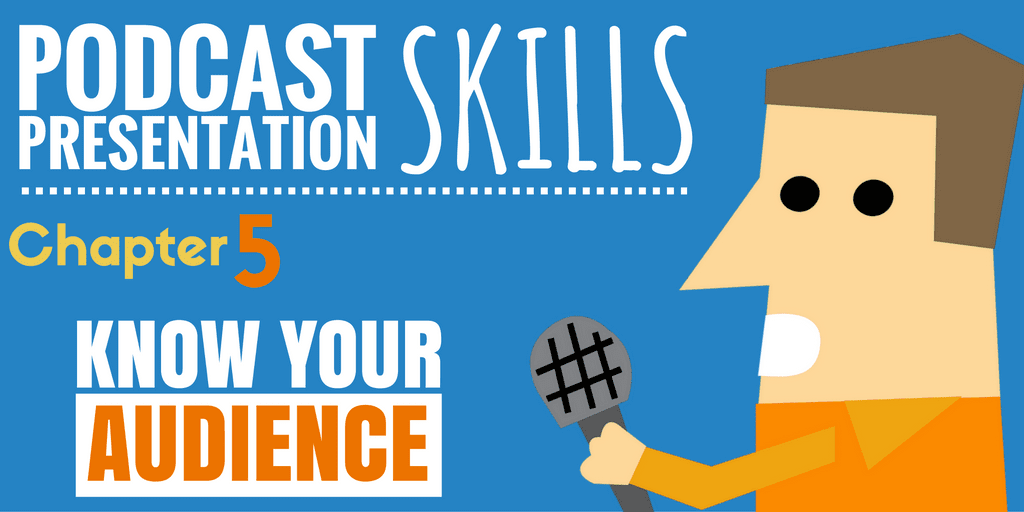
Know Your Audience | Podcast Presentation Skills #5
You’re planning out your podcast, you’ve got guests lined up, you know what you want to talk about. You’re all set. But are you? Have you considered your audience’s point of view? What do they already know? What will they want to hear? It’s the age-old question broadcasters have to consider before beginning any project;
What Can I Assume About My Audience?
This is an important question you have to answer before you do anything publicly, be it blogging, speaking, or podcasting. You’ll want to present the best message to your audience.
Otherwise, you may not connect meaningfully – emotionally and intellectually – with your listeners, and fail in the long run to build and retain them.
What are People Asking?
Look online to see the types of things people are looking for, the questions they’re asking, and the level they seem to be at themselves. A bit of research will give you an indication of where to position your podcast. You can also use Google Analytics to see the phrases people are actively searching for.
It’s also good to go on related forums and get a feel for the conversations. You’ll soon know the terminology that most people are comfortable with, and that’ll help a lot with your presentation.
Ask Them Yourself
If you’ve already put at least one episode out, then engage with your audience and get feedback.
Try surveys, provide a comments form on your website – especially if you write blog posts – and you can even use voicemail software for listeners to leave you messages.
One way or another, getting feedback from your audience is vital for helping you understand your audience.
How Are They Listening?
It’s worthwhile finding out how your audience tunes in. The more you know about them, the more you can tailor your content to their tastes.
- Are They Listening on Mobile Devices? They probably are, but which kind? Apple, Android or Windows Phone?
- Are they listening via your blog? iTunes, Stitcher, Google Play or something else?
- When are they listening? Are they out jogging, or commuting or doing housework?
And where are they based? Your home country? Maybe not, in which case it may be wise to leave out any regional jargon or slang. Not everyone in the world knows that a pair of “baffies” in Scotland are actually slippers.
Another useful thing to know is which of your episodes had the most engagement with your audience. You might be surprised, and that alone could help you decide which direction to take your podcast in.
The Golden Rule
Lastly, I’d say it’s easy to worry too much about getting the exact message correct. The fact is that everyone’s different – no two of your listeners will have the same level of expertise.
As long as you do at least one of the following – Engage, Educate, Entertain – then you’re halfway there.
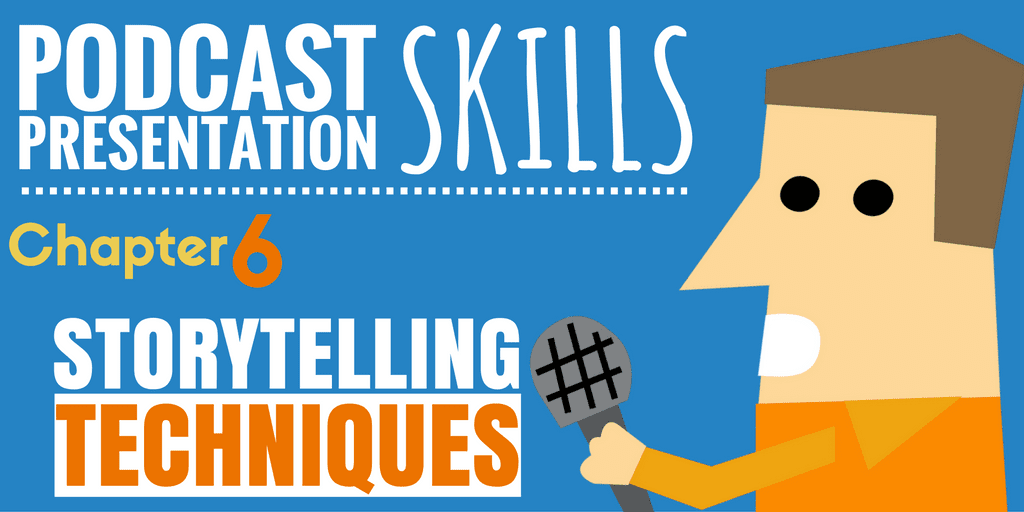
Storytelling Techniques | Podcast Presentation Skills #6
I decided to come up with a handful of different techniques you can use to present your message in an engaging and meaningful way.
After making a few preliminary notes, I suddenly remembered that storytelling is bigger business than ever in the podcast world. I mean, of course, audio drama pieces like We’re Alive, and The Black Tapes.
We already know that people love stories, both telling them and hearing them. We find them engaging and entertaining, sometimes even educational and informative.
But how do we adapt the storytelling techniques to our factual podcasts? That depends on which technique you want to use;
The Hero’s Journey
Sometimes known as The Monomyth, when the protagonist has to leave their comfort zone on a quest into the unknown – good examples of this are Star Wars, The Wizard of Oz, and Indiana Jones.
Usually, they overcome adversity, save the world and/or a loved one, and return home to reap the reward – including a lesson learned.
How Does This Help me?
Using the Hero’s Journey to structure your podcast can help you to explain what has brought you to the lesson you’ve learned and want to share. You can recreate your journey and take your audience with you.
You can also show the risks you took, the rewards you gained, and the newfound wisdom you learned.
“Welcome to the PC Repair podcast – this week, I want to tell you about the time my laptop crashed due to a power surge, and what I had to do to save my files. It all began one stormy evening in my study…”
“…so by the end, not only did I have my files back, I also had my surge protector to keep me safe in future!”
The Mountain
The mountain structure is a way of mapping the tension and drama in a story. Similar to the Hero’s Quest, it’s a way of mapping out your story with a peaks and troughs.
It’s good for helping you to plot out the key points of your podcast, and is basically a series of small challenges and rising action before a dramatic conclusion.
It’s a bit like a TV series – each episode has its ups and downs, all building up to a big finale at the end of the season.
How Does This Help me?
You can use this to demonstrate how you overcame a series of challenges. Again, it’s recounting previous events so it can build tension – keep the audience in the dark until you reach a satisfying conclusion.
“We were finally about to buy our dream home and we couldn’t be happier! I didn’t know it at the time, but I was about to lose my job the following week. Suddenly, I was under immense pressure…”
“…and the phone rang. It was the musem. They’d authenticated the painting and it was worth half a million pounds!”
Start In the Middle
This technique is also called “in medias res” in Latin, which literally means “into the middle of things.”
It’s when you start your narrative in the heat of the action. This gives you a chance to pull in your listeners and get them hooked from the get-go, before starting over at the beginning to explain how it all came about.
It’s best not to reveal everything right away, though. Try leaving something that obviously needs more explanation later on, while making sure your opening is interesting enough in the meantime. Give your listeners just enough info to whet their appetite, then go back and set the scene of your story.
Another thing I’d say is that this technique is often best for shorter productions – stringing it out too long runs the risk of losing your audience to boredom and frustration.
How Does This Help me?
It’s a great way of grabbing your audience’s attention in the first 60 seconds. It keeps them craving a resolution and closure, and it harnesses their attention and focuses on what should be the pivotal element of your message.
“Three weeks ago, I was in a glider which crashed in the forest. I came face to face with a Kodiak bear and I knew I was likely going to die. But one household object – something I wouldn’t even normally carry – saved my life.”
“You see, the week before, my mobile phone stopped working, so I went to the hardware store to find something which could…”
‘Wait, what? A bear? How did you get out of that?!` How indeed?
There are just a few classic techniques for telling your story. Naturally, there are many more. The one thing I hope you take from this is that stories are the language of the universe.
And there are no boring stories – just boring storytellers!
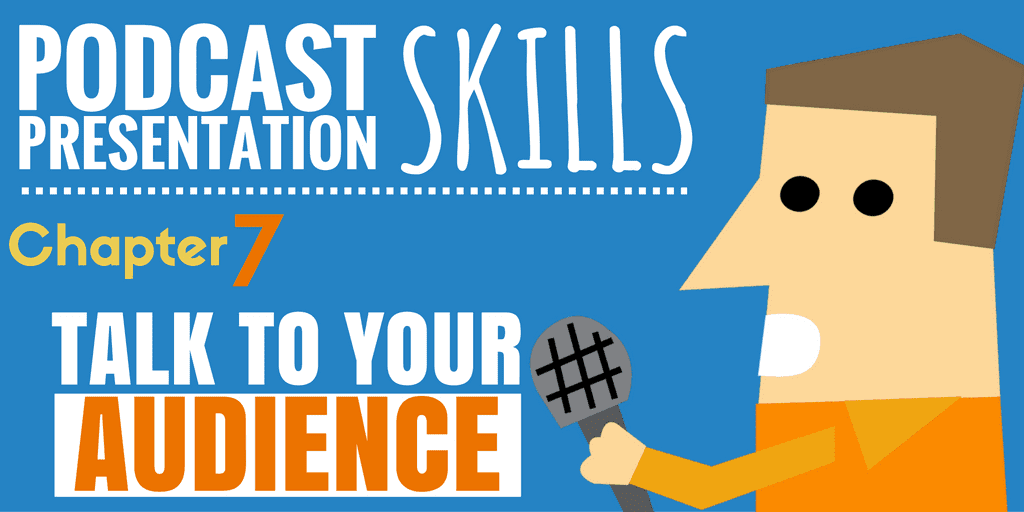
Talk to Your Audience | Podcast Presentation Skills #7
My first foray into the world of media was actually on hospital radio, some years ago now. I loved it. I got to play the songs I wanted and talk about whatever I liked. A bit like podcasting, really!
The thing that made me lose interest – and it’s so often the same thing with podcasters – was a complete lack of engagement with the audience… and that’s making the presumption that anyone was even listening!
Talk to Your Audience
There are a number of things you can do to connect with your listener and grow your audience. Even before the podcast airs!
Remind your Interviewee
Remember, your guest has fans, too! They’ll want to check your podcast out purely because of your guest, so give your episode the best chance of being heard by e-mailing your guest to remind them that their episode has gone live.
In fact, be extra-helpful and include a direct link to the episode, including the show notes page and the option to share it to various social networks. Before you know it, dozens of extra listeners, and a good chance that’ll they’ll stick around for future episodes.
Here’s an in-depth look at encouraging interview guests to share your episodes.
If you don’t have interviews, then reach out to your community. Ask people to share your episode with anyone who might like it.
Social Networks
There are groups on Facebook for everything – from new parents to people who like dressing up as Disney Princesses. (Guilty).
Find a group – or even start one – that’s relevant to your podcast and share your work with people. Don’t just link-dump, though. Try to get involved in some of the discussions and make yourself known in a positive way. You’ll find people are happy to chat.
Before you know it, you’ll be providing relevant content directly to your target audience. And, since you’re an active and helpful member, they’ll reciprocate by sharing your show.
Set up a page for your show, too. You can include show notes on there, as well as links that are relevant to your audience, maybe something you discussed in the latest episode. Somewhere in your podcast episode, be sure to tell people where they can find you.
“Thanks for listening, I’ll catch you next week – get in touch by e-mailing me, the address is [email protected], and you can also find me on Facebook and Twitter. Just search for The X Podcast!”
Reach out to People
Ask for reviews! Tell people you want feedback. What do they like or dislike so far? What do they want to see in future?
Reach out to your online communities, and even your friends and family. Ask them for feedback to help you learn and grow. Subscriptions and ratings & reviews are incredibly powerful at motivating people to improve and great for avoiding stagnation.
Again, when I was doing hospital radio, once I’d gotten the hang of broadcasting I had no idea if I was any good or how I could improve. Feedback would have given me the challenge and the impetus to do so.
The Call to Action!
The blogger’s favourite! At the end of each episode, and especially on any written posts you put out there, be sure to include what we call a “Call to Action,” also sometimes called the “Over to you” segment.
You’re asking your listener to get involved. Maybe your episode was about the top 5 ways to do something, so you invite them to contribute to the discussion;
“So now it’s over to you – do you agree with my list of 5? Have you found another way to do it? Or maybe you’ve tried some of the things I’ve talked about today? I’d love to know how you get on so please let me know, either in the comments box below the show notes or by getting in touch by e-mail. I’ll read the best responses out on next week’s episode.”
See how I’ve left it open to listeners in both camps – those who agree and those who disagree. You’re inviting a discussion, not just looking for a pat on the back. Getting them involved helps to build trust and rapport with your audience. They feel like they’re a valuable part of your podcast, which they are!
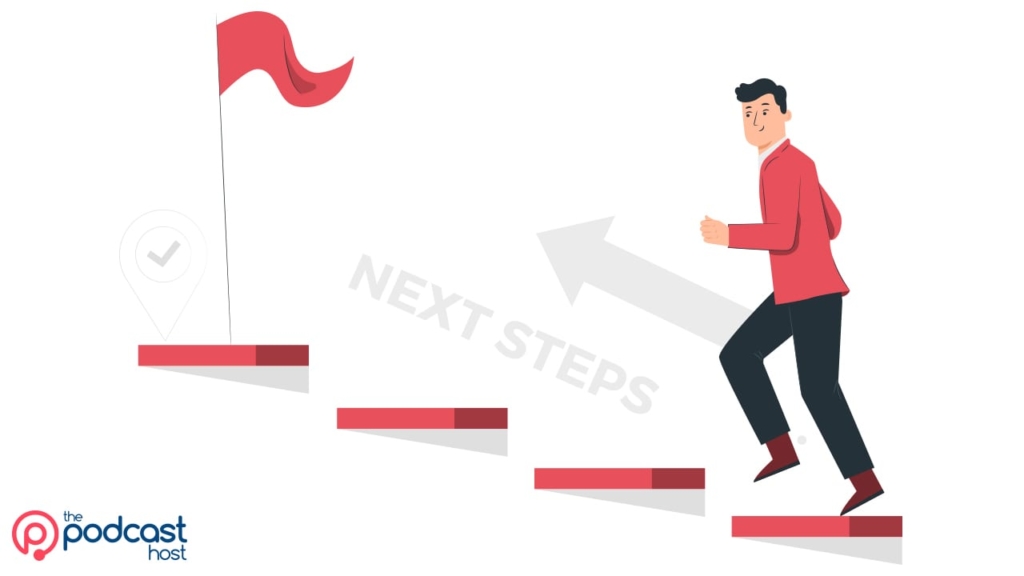
Podcast Presentation Skills: Next Steps
Hopefully this has all been useful to you in your quest to become a better-sounding podcast presenter. Remember, this is essentially all just down to practice, so always prioritise progress over perfectionism.
So what next? Well, you can be a world-class presenter, but if you’re recording into terrible gear, you’re never going to sound your best. Check out our Best Podcast Microphones roundup if that’s an avenue you’re exploring right now.
We also have a comprehensive Voice Training for Podcasters course inside Podcraft Academy. In there, you’ll also find courses on everything from editing, to promotion and monetisation. We run weekly live Q&A sessions in there too, so you’ll always get the help and advice you need to keep you moving forward!
